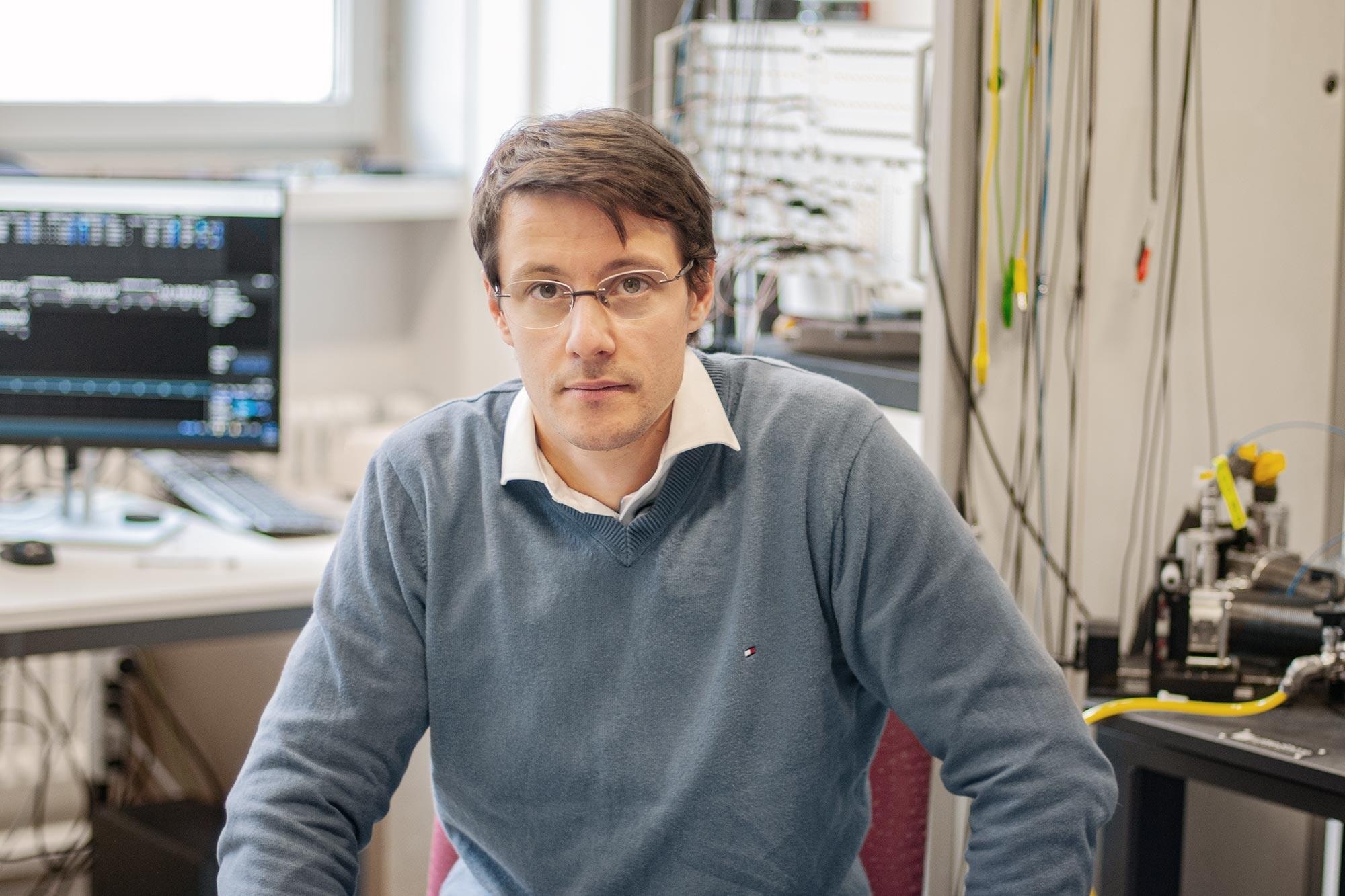Twelve years ago, Mickael Perrin began his scientific career with no idea that he would be working in the field of quantum electronics, which would only become popular a few years later.
 Mickael Perrin. Image Credit: SNF
Mickael Perrin. Image Credit: SNF
At the time, physicists were just starting to talk about the potential of quantum technologies and quantum computers. Today there are dozens of start-ups in this area, and governments and companies are investing billions in developing the technology further. We are now seeing the first applications in computer science, cryptography, communications and sensors.
Mickael Perrin, Assistant Professor, ETH Zurich
Another area of application being made possible by Perrin’s research is the creation of electricity with nearly no energy loss through quantum phenomena. The 36-year-old expert blends thermodynamics and quantum mechanics, two traditionally distinct branches of physics, to accomplish this.
Due to the high caliber of Perrin’s work and its potential for future applications, he has been recognized with two awards in the last year: the Swiss National Science Foundation (SNSF) awarded him an Eccellenza Professorial Fellowship in addition to one of the highly coveted ERC Starting Grants for young researchers. Currently, Perrin works as an Assistant Professor of Quantum Electronics at ETH Zurich and heads a research group of nine people at Empa.
Ten Thousand Times Smaller Than a Hair
According to Perrin, he never thought of himself as naturally gifted in mathematics.
Perrin noted, “It was mainly curiosity that pushed me in the direction of physics. I wanted to gain a better understanding of how the world around us works, and physics offers excellent tools for doing just that.”
In 2005, he enrolled at Delft University of Technology (TU Delft) to pursue an applied physics degree, having completed his high school education in Amsterdam. Perrin’s first focus was on practical applications rather than theory.
Perrin originally fell in love with the fascination of creating micro and nanoscale devices while studying under the renowned quantum electronics pioneer Herre van der Zant. He quickly realized the countless opportunities that molecular electronics offered since circuits can be utilized as transistors, diodes, or sensors and have entirely varied properties depending on the molecules and materials chosen.
Perrin studied for his Ph.D. at TU Delft for a long period, spending much of his time in the nanolab cleanroom, always covered in a white full-body overall to keep dust and hairs from contaminating the tiny electronics. The technical infrastructure needed to construct machines a few nanometers in size—roughly 10,000 times smaller than the width of a human hair—was made possible by the cleanroom.
“As a general rule, the smaller the structure you want to build, the bigger and more expensive the machine you will need to do so,” Perrin stated.
For example, lithography machines are used to form intricate mini-circuits on microchips.
"Nanofabrication and experimental physics require a lot of creativity and patience, because something nearly always goes wrong. Yet it is the strange and unexpected results that often turn out to be the most exciting,” Perrin added.
Graphene –A Miracle Material
A year after earning his Ph.D., Perrin was hired by Empa to work in the lab of Michel Calame, a specialist in incorporating quantum materials into nanotechnology. Even then, Perrin, a dual citizen of France and Switzerland, has resided in Dübendorf alongside his girlfriend and their two kids.
Perrin added, “Switzerland was a good choice for me for several reasons. The research infrastructure is unparalleled.”
He gets everything he needs to create nanostructures, including the measurement tools to evaluate them, from Empa, ETH Zurich, and the IBM Research Center in Rüschlikon.
“Also, I am an outdoor type. I love the mountains, and often go walking and skiing with my family,” Perrin further stated.
Perrin is also a skilled rock climber. He occasionally takes weeks off to climb in distant regions, most commonly in France, his family’s home country.
At Empa, this young researcher was free to continue experimenting with nanomaterials. A specific substance quickly piqued his interest: graphene nanoribbons, a carbon-based material as thin as the individual atoms. Roman Fasel’s group at Empa manufactures these nanoribbons with extreme accuracy.
Perrin demonstrated that these ribbons have unique features and can be employed in a variety of quantum technologies.
At the same time, he developed a strong interest in transforming heat into electrical energy. In 2018, it was demonstrated that quantum effects may be used to efficiently convert thermal energy to electricity.
To date, the challenge has been that these desirable physical features show only at extremely low temperatures, near absolute zero (0 Kelvin; -273°C). This has limited significance to hypothetical future uses, such as cell phones or minisensors. Perrin came up with the notion of employing graphene nanoribbons to solve this problem.
Compared to other materials, their unique physical characteristics indicate that temperature has a far lesser effect on the quantum effects and, thus, the desirable thermoelectric effects. Soon after, his team at Empa was able to show that graphene nanoribbons’ quantum effects are essentially maintained at 250 Kelvin, or -23°C. It is anticipated that the system will function at room temperature in the future.
Lower Power Consumption Thanks to Nanotubes
Before technology allowed smartphones to consume less power, there were still a lot of obstacles to be solved. Due to the extreme miniaturization, unique parts are still needed to make sure that the systems that are developed function.
Perrin and associates from China, the UK, and Switzerland have demonstrated lately that carbon nanotubes with a diameter of just one nanometer can be included as electrodes in such systems.
But before these extremely complex and sensitive materials can be produced on a large scale and used in gadgets, Perrin predicts that it will take at least another 15 years.
Perrin concluded, “My aim is to work out the fundamental basis for applying this technology. Only then will we be able to gauge its potential for practical uses.”
#FacesOfScience: Mickel Perrin, Physicist
Video Credit: Swiss National Science Foundation (SNSF)